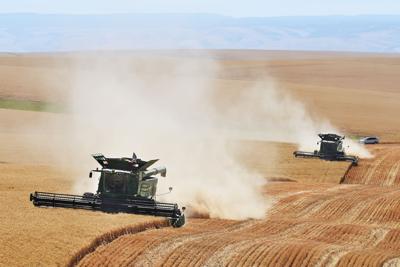forum
library
tutorial
contact

Working Together, We Can Have
Healthy Rivers and a Healthy Economy
by Alex McGregor
Spokesman-Review, June 4, 2022
|
the film forum library tutorial contact |

|
Working Together, We Can Have
by Alex McGregor
|
 Seven years ago, when the ocean temperatures in the Pacific were in a periodic cooler cycle, NOAA Fisheries reported the most productive decade of fish runs since recordkeeping began at Bonneville Dam in 1938. "The success of this fall Chinook run reflects the region's commitment and the collaborative spirit that has made it possible," said Paul Lumley, Executive Director of the Columbia River Inter-Tribal Fish Commission.
Seven years ago, when the ocean temperatures in the Pacific were in a periodic cooler cycle, NOAA Fisheries reported the most productive decade of fish runs since recordkeeping began at Bonneville Dam in 1938. "The success of this fall Chinook run reflects the region's commitment and the collaborative spirit that has made it possible," said Paul Lumley, Executive Director of the Columbia River Inter-Tribal Fish Commission.
Warmer ocean temperatures and discouraging returns followed. Cooler waters recently have brought some improvement. The collaborative spirit and commitment remain vital. Breaching the dams won't get us there with consequences dire for our farms, our communities, and our ability to provide bountiful crops to feed a hungry nation and the world.
Farmers have worked hard to meet the challenge producing bountiful crops while reducing water-borne soil erosion 85% and helping improve air quality, too--reducing wind-blown dust six-fold and reducing stubble burning 22-fold. Moving what we now move by the Snake River waterway would require five million more gallons of diesel fuel, expensive, to be sure, but even more costly to our environment. The EPA Emissions Lab reports that tugs produce 80-85% less hydrocarbons than trains or trucks, far less carbon monoxide and nitrous oxide, too.
Railroads cannot handle the load they have today, much less several million more tons of crops and nutrients to nourish them. We'd be asking that of our rail system should the lower Snake River dams be breached. Deputy Agriculture Secretary Dr. Jewel Bronaugh describes a system currently in disarray: "increasingly unreliable railway service is pushing American farmers and ranchers to the breaking point . . . When railroads charge unreasonable rates and provide poor service, farmers struggle to make ends meet, consumers pay higher prices at the grocery store and the United States becomes less competitive on the global market."
Scientists at the NOAA Fisheries Science Center, in a peer-reviewed 2021 study, warn of the biggest challenge salmon face -- potential future losses of 90% of the fish at sea from long-term warming of the ocean. "It's horrendous," lead author Lisa Crozier stated, "I wish I had a magic answer. . . but it's the reality of where we are right now with the amount of CO2 we have pumped into the atmosphere." We can, and must, do better than that.
The substantial investment Congress made in its infrastructure package for salmon offers hope -- $2.8 billion for habitat restoration, hatcheries, culvert replacement, and most importantly, research.
With survival through the hydro-system already high, fisheries ecologist Crozier puts "more faith in actions like improving coastal habitat, reducing species that both prey on Chinook and those that compete with them for resources, including more abundant hatchery salmon and steelhead, and slowing climate change."
We agree with her that "the goal is for people to come together and look at holistic solutions." Doing so we can make real progress through science, hard work, and a shared goal to help our iconic Northwest fish while keeping our economy strong. Working together we can build upon a shared commitment and collaborative spirit, as Paul Lumley of the Inter-Tribal Fish Commission put it several years ago. As I noted at the outset, we can have healthy rivers and a healthy economy. We should accept nothing less.
Related Pages:
Some Pacific Salmon Populations are Especially at Risk from Climate Change by Public Library of Science, Phys.org, 7/24/19
Related Sites:
Climate vulnerability assessment for Pacific salmon and steelhead in the California Current Large Marine Ecosystem by Crozier et al., PLOS One, 7/24/19
learn more on topics covered in the film
see the video
read the script
learn the songs
discussion forum
